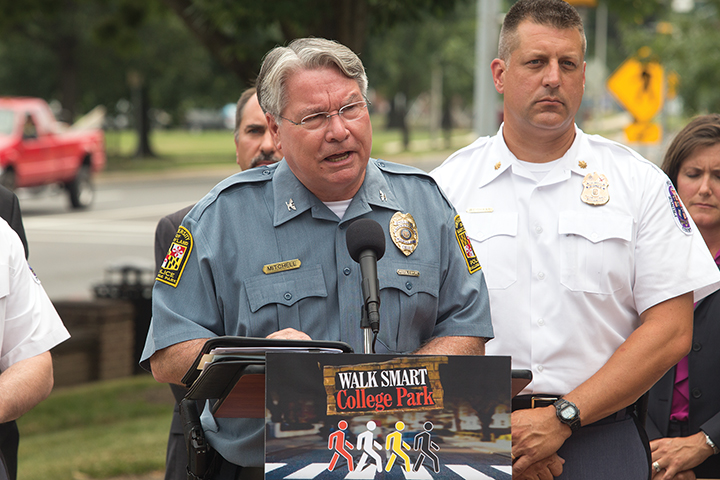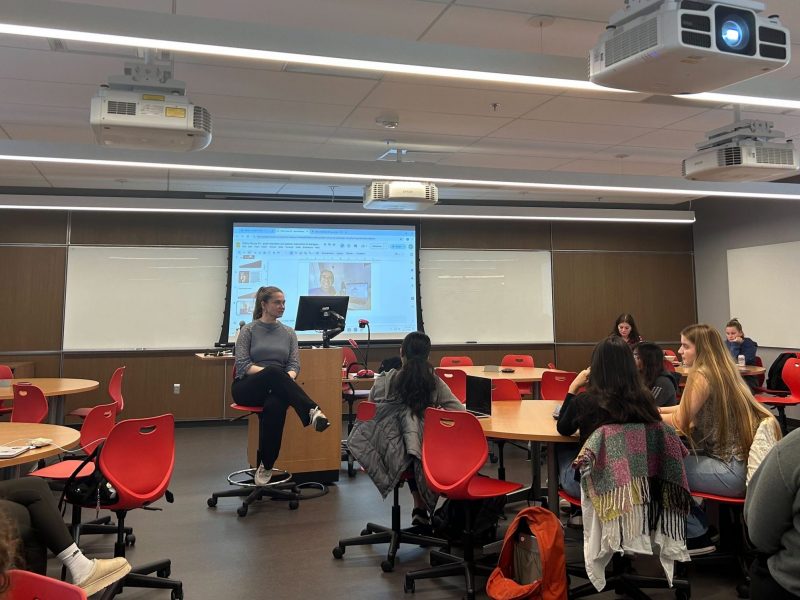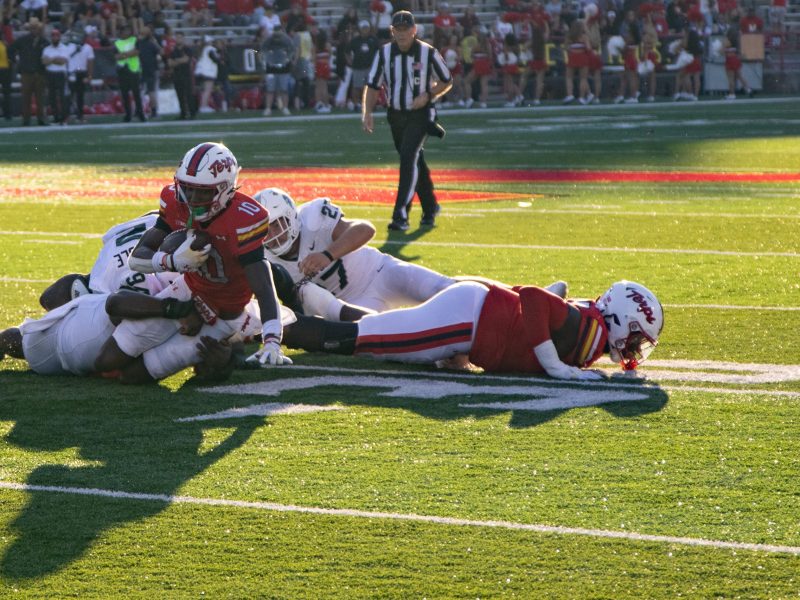
University police chief David Mitchell speaks at a press conference outside of the UMD visitor center on Monday to talk about pedestrian safety and new regulations being placed on Route 1.
After recording five pedestrian accidents since January, Route 1 is set to receive some much called-for safety upgrades, officials announced yesterday.
At a press conference Monday, Melinda Peters, Maryland State Highway Administration Administrator, announced plans to lower the speed limit from 30 to 25 mph between Guilford Road and Berwyn Road. The change will phase in by Aug. 1 to address the pedestrian safety crisis before students return this fall.
Last fall, the SHA initiated a roadway safety audit to figure out the most effective way to improve pedestrian safety in the city. Three pedestrians have been fatally struck since the study began.
Peters stressed that the SHA has been devoting a steadfast effort toward creating short-term improvements along Route 1. The SHA has already implemented several enhancements, including freshly painted crosswalks, new flashing pedestrian signs and automatic walk signs.
The SHA also decreased the wait time for walk signals and increased crossing time, in addition to placing numerous “Do Not Cross” markings along sidewalk curb lines. “State Law – Stop for Pedestrians in Crosswalks” signs have also been placed between Paint Branch Parkway and Calvert Road.
Officials said the reduced speed limit of 25 mph will also significantly decrease the likelihood of pedestrian death. An additional flashing overhead pedestrian signal will be installed at the intersection of Route 1 and Hartwick Road by late October, Peters said.
Finally, the SHA also plans to install a 5-foot high median fence along Route 1 between Knox Road and Hartwick Road by the end of August to deter mid-block pedestrian crossings. Peters emphasized that it is only a temporary fix.
“There is a long term project along the U.S. 1 corridor that will require additional enhancements. The focus right now is to get something in before school starts,” she said.
A SHA task force will then assess what changes may need to be made from a long-term perspective.
Still pending at the time of the announcement was Mayor Andy Fellows’ proposal for speed camera hours of operation to be aligned with heavy pedestrian periods on Route 1. The College Park City Council unanimously passed the proposal at Tuesday night’s council meeting.
“When you put all of this together, I think its going to make things much safer for our students to go out, have a good time and get home safely,” said University Police Chief David Mitchell.
The City of College Park and University Police will deploy officers to strictly enforce the new speed limit and conduct sobriety checkpoints to combat drunk driving. Both university and Prince George’s County police officers will continue patrolling on foot Thursday through Friday nights until 3 a.m., enforcing traffic laws and handing out educational material.
“Our mere presence around Knox Road and Route 1 has paid big dividends,” Mitchell said.
This part of the educational campaign “Walk Smart College Park” will remain in effect indefinitely to meet the goal of educating Maryland students about the rules for driving, walking and crossing the road, Mitchell said.
“When you’re standing there in a uniform, people don’t generally break the law in front of you,” Mitchell said. “But people jaywalk in front of us because they don’t think of it as breaking the law.”
He recalled one night when he saw a student begin to jaywalk across Route 1.
“All I said was … ‘50 bucks.’ He got back on the sidewalk and said, ‘That’s a lot of money.’ I said, ‘That’s a lot of beer,’” Mitchell said. “The student responded, ‘That’s a whole lotta beer … I’ll wait.’”
Mitchell will also be in contact with Route 1’s bars, which need to do their part in securing the long lines that can force students into the street, he said.
“We’re not down there to say ‘Gotcha!’” Mitchell said. “We’re just trying to change some of the behavior of both pedestrians and motor vehicles.”
Peters, Mitchell and university President Wallace Loh all agreed that students’ attitudes about pedestrian safety will be a crucial factor in the effectiveness of safety initiatives.
“The State Highway Administration, university, city and county have worked together to re-engineer traffic,” Loh said. “Now I urge drivers and pedestrians to do their part.”
EDITOR’S NOTE: This story has been updated to include the City Council’s final vote on a speed camera proposal.



